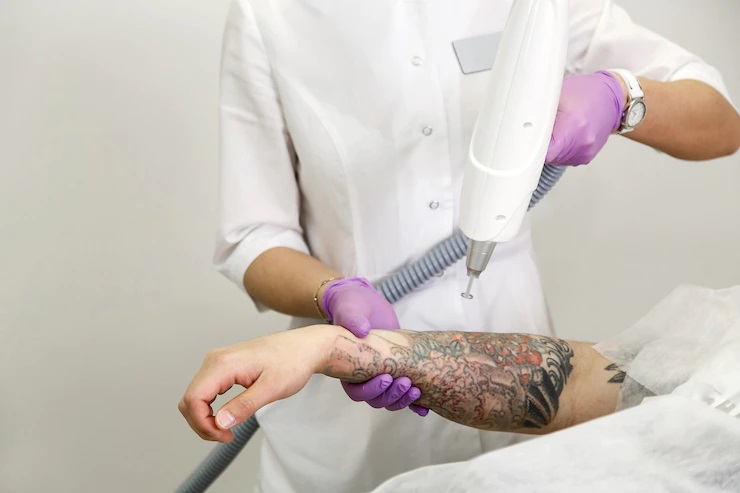[Cited from: JOURNAL OF COSMETIC AND LASER THERAPY, Authors: Debora Aparecida Oliveira Modena, etc.]
Discussion
The best parameters for the tattoo removal treatment vary according to the choice of variables such as the wavelength, energy, fluency, and spot size, and these depended on the clinical evaluation and knowledge of factors such as tattoo type, size, color, and ink deposition.
The Nd:YAG Q-S laser presents a 1064 nm wavelength, emits infrared and green light through the KTP crystal (potassium titanyl phosphate) by the 532 nm wavelength. This versatility allows it to treat dark pigments, such as black and dark blue, using the 1064 nm and to also treat red, yellow, and orange pigments with the 532 nm.
In this review, the studies selected carried out the treatment on black and multicolor tattoos in red, yellow, orange, purple, green, and blue. Among them, Bernstein et al. (2015), Lin et al. (2009), Kauvar et al. (2017), and Pinto et al. (2017), proved in their studies the efficacy of the Q-swithced 1064 nm/532 nm Nd:YAG laser in lightening the treated tattoos. However, some tattoos present inks with different colors that are not absorbed by these specific wavelengths; in this case, the indication is the association with other types of laser.
Regarding the pulse duration (ns), fluence (J/cm2), and spot size (mm), there was no consensus among the articles, which was expected since they were carried out with a population of different ethnicities and tattoos types with different sizes and densities. We evidentiate that the ideal laser uses the lowest possible fluence, which is the measurement of energy density so that it can cause the whitening of the tattoo. Considering this, with the use of too-high fluencies and with the wavelength of 532 nm, the skin absorbs too much energy, which creates the possibility of blister formation and scars, and in higher skin phototypes the chance of hypopigmentation is higher.
Concerning the spot size used in the treatment, we verified that when using larger spot sizes, less energy is deposited superficially in the tissue, and consequently, the damage to the epidermal melanocytes is less. This is in contrast to the use of smaller spots, where the laser is more superficial and consequently more aggressive, creating a higher risk of scars.
Concerning the adverse effects reported in the articles, most refer to edema, erythema, purpura, bleeding, the formation of crusts, and post-inflammatory hyperpigmentation and hypopigmentation; such effects may be reduced or potentialized according to the choices of parameters, tattoo evaluation, and the patient’s phototype.
Post time: Apr-04-2022

